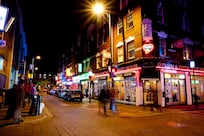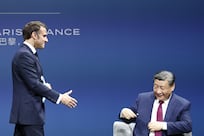Liverpool Football Club’s owners, the Fenway Sports Group, would have had no frame of reference when trying to understand the fans’ revolt that has forced them to back down on ticket price increases.
The previous weekend, thousands of fans at Anfield, Liverpool’s stadium, rose as one 13 minutes before the end of play, sang the club’s iconic anthem You’ll Never Walk Alone, and began leaving the stadium in protest against higher ticket prices. Diehard fans turned their backs on their beloved team to underscore the depth of their rage at the owners.
FSG is an American company, accustomed to that country’s culture of moveable sports “franchises” with arbitrary local connections. Ever wondered how the LA Lakers basketball team got that name, given the absence of any lakes in their home city? Or what Utah Jazz, another US basketball team, might mean in a musical sense? The Jazz were named in their city of origin, New Orleans; the Lakers started life in Minneapolis where the name referred to local geography.
English football clubs, by contrast, are deeply rooted in their communities, where club loyalty is a birthright phenomenon passed between generations of working class families.
That association began late in the industrial revolution, as the newly urbanised working class replaced the intimacy and security of rural community life with the secular devotional ritual of the weekend football match. For decades, more Brits have sung their hymns in football stadiums than in churches.
The solidarity of collective suffering, rather than the expectation of triumph, is the basis of the club loyalty that is such a precious ingredient of English football culture. Most fans of most clubs will not have known more than the occasional taste of a triumphant season, often decades earlier. (Liverpool last won English football’s league title more than a quarter century ago.)
The globalisation of media that began in the 1990s has made English football the most lucrative weekly global sports spectacle, attracting billions of TV viewers enthralled by the same spectacle in real-time from Manhattan to Mogadishu and all points between.
The resultant revenues have attracted billionaire investors from abroad. Yet the key revenue source for Premier League clubs is not the ticket price paid by those inside the stadium; it’s the billions of dollars paid by broadcasters the world over for broadcast rights.
So, if the revenues generated by the TV “crowd” are more important than the paying punters at the gates, why did Liverpool’s owners back down? They reversed the fee hike because the club can’t afford to alienate the local fans whose passion is an integral part of the spectacle they market to a global TV audience.
What the global TV audience is buying is a spectacle fuelled by the febrile intensity of fans inside the stadium, expressing the pride of generations as they sing their lungs out, baying at the ref’s mistakes or villainous tackles, roaring their team forward. TV tune-in ads everywhere promoting English football emphasise the sound and fury of the spectacle to signal its power. (Try watching with the sound turned off, and the spectacle loses a lot of its power.)
The players themselves rely on that intensity to spur their own adrenalin, which is why it’s so common for players from teams fighting their way back into a game to flail their arms at the crowd, demanding more noise.
Measured in inflation-adjusted real terms, the cost of attending football matches in England has risen 189 per cent over the past three decades, according to The Economist. Premiership crowds are older, and include more tourists now than ever before. But pricing out younger local legacy fans rips the beating heart out of the club’s local culture. And that not only dilutes the ability of a crowd to lift the team’s performance, but it also dims the intensity of the spectacle that is the basis of English football’s global TV appeal.
The Liverpool owners’ retreat on the latest price rise reflects a savvy awareness of the importance of having local fans inside the stadium to the business proposition of Liverpool FC as a global entertainment spectacle.
But the 77th-minute walkout in the most recent home game is unlikely to end the conflict. That was a last-straw moment. Anyone familiar with the club and its traditions knows how painful it was for thousands of fans, many of them working-class folk who stretch household budgets to pay their way into the stadium that has, since childhood, been the temple of their collective identity, to walk away from the game. But they did not walk alone; they walked together – and in doing so, they expressed their power, and provided an example to others.
Local fans across the country are now vowing to fight for affordable access to stadiums. Because while corporate-owned clubs treat them simply as “customers”, they know that their performance during the game is an integral part of the TV spectacle that is the club’s main source of income. Fans have long been proclaimed as the equivalent of having a 12th player on the field. And that 12th player is sick of being exploited. Their indignation is adding a new layer of drama to the Premiership’s most interesting season to date.
Tony Karon teaches in the graduate programme at the New School in New York





